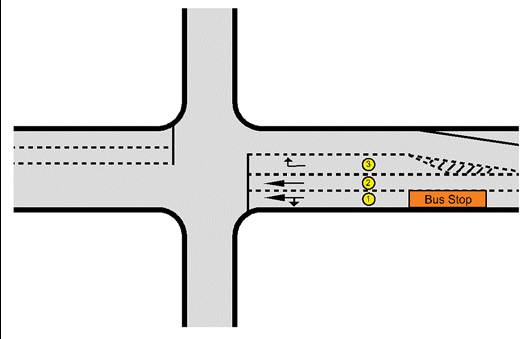In this example (see diagram) you are best to model lane 1 as a flare of lane 2. If the number of buses is high, it will be disruptive to traffic flow on lane 1 not only when a bus is stopped at the bus stop but also at any time it is in the bus lane. If you were to model the lanes as separate lanes you would need to reduce the sat flow on lane 1 to compensate but for this you would really need to know the flows on each lane separately to have any chance of selecting a suitable value of sat flow.

A compromise is needed to compensate for the fact that the flare is not always a flare! I suggest you increase the flare length of lane 1 to compensate. By how much you do this is the tricky bit. As a starting point, I would be inclined to compensate by looking at the proportion of time in which you consider lane 1 flow to be disrupted and then weight the link length and the space in front of the bus lane by the proportion, e.g. if lane one is affected by the presence of a bus for, say, a third the time then you could make the flare length equal to (2/3 x link length) + (1/3 x the space in front of the bus stop), or something similar. Then see if it is giving you reasonable results.